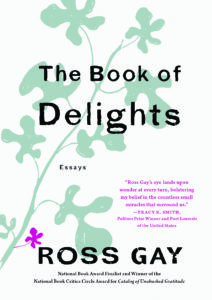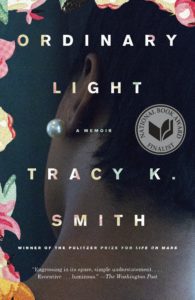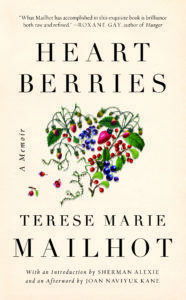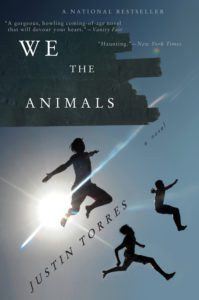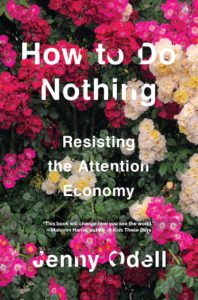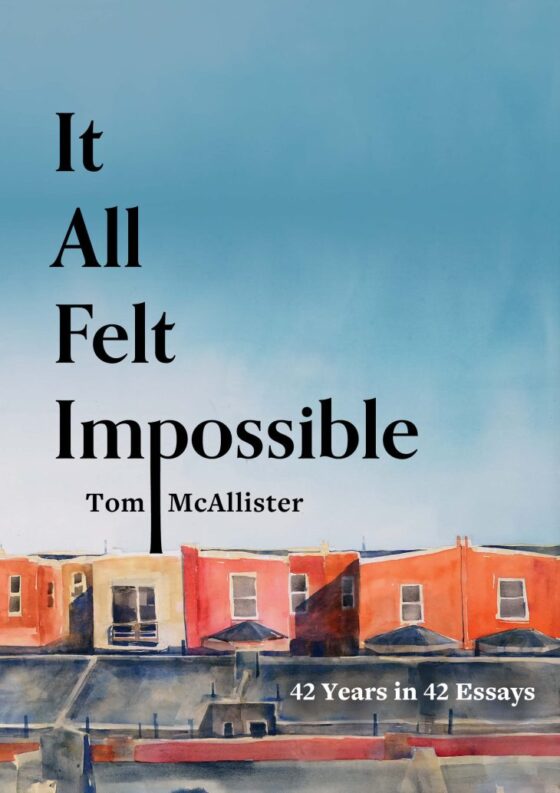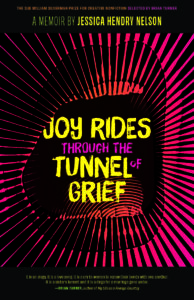
I was thirty-three when my partner of fifteen years left me. It was November in Vermont, the beginning of the longest, darkest, coldest, loneliest winter of my life. In other words, it was an appropriate setting for a breakdown. In memory, I recall this period as my season of grief, although not without fondness. It demanded reckoning and change, as grief times tend to do, and to cope I developed certain grief practices.
By practicing grief, much like one might develop a creative or meditation practice, I found wonder everywhere and in everything. From the outside, it didn’t look like much. A lonely woman walking across snow-heavy hills beside a gallant, one-eyed dog. This same woman eating sushi from a plastic tray in the grocery store parking lot. Or at the gym fumbling through a Zumba class in ill-fitting athleisure wear. This language is in hindsight, mind you. Back then, I just thought I was going down. And yet, as Annie Dillard writes in the essay, “Living Like Weasels” from Teaching a Stone to Talk, one of selections below, “Down is a good place to go, where the mind is single. Down is out, out of your ever-loving mind and back to your careless senses.” The tunnel effect of grief heightens the senses, and as I bemoaned my marriage, I was also awakened to the corporeal world right in front of me. After all, there was no escaping it. Everywhere I went, my grief came with me. The effect was a kind of insistent presence both seductive and painful. I stayed close to home, sensing that mourning had made me monstrous, or visibly disfigured. But inside my world of quotidian ephemera—the silence and light and objects inside my newly empty house; the hills of snow and trees that surrounded me—was terror and awe.
For a while, my grief was so acute that I could not harness my attention enough to read. This came as a shock. Books were my refuge. My first and best escape. Forget television or movies; I couldn’t get through a single one. Music was hit or miss. Drugs and booze were powerless against this storm of ache. All the old joys were rendered mute. But through the scrim, I slowly started to pick out sources of wonder that a normal brain, a brain not on grief, might miss. They were a blue tarp set against a field of white snow; the sound of teenagers laughing in that same grocery store parking lot; a stray cat nosing a trash can in the alley behind the building where I taught. Faces went strange. Colors bled and were electrified. Time bent. Everything was calibrated to a higher pitch. In grief, I was born back into childlike wonder.
When I was finally able to read again, I went in search of books that captured this juxtaposition of pain and beauty; terror and awe. I did not want the portal to close, even though I was ready to emerge from the tunnel of grief. In the distance, a slip of joy flickered in and out of focus. I lunged. This collection of books then is the rope I clung to as I emerged. It includes old beloveds and hot, new lovers. These are books vested in the visceral experience of wonder amidst the ordinary experience of grief. They demand a certain kind of embodied attention, which is also in some cases their subject matter. In all of them pulses the wunde in wunder (German), an embrace of contradictory truths. Salvation on a slice of burnt toast. Read them to remember the world when the world seems so desperately far away.
***
Ross Gay, The Book of Delights
As the title suggests, this book is a delight. But it would be a mistake to translate that reductively. It is also complex, poetic, perceptive, and profoundly generous. Gay starts with a simple premise, which he recounts in the book’s preface: “I decided that it might feel nice, even useful, to write a daily essay about something delightful.” The result is a collection of 102 “essayettes,” as he calls them, small recollections of everyday joy. Gay makes a study of delight, which he defines through what he calls “a false etymology: de-light suggests both “of light” and “without light””—but in that process also emerges tension, humor, and a kind of propulsive energy rooted in the practice of attention. One of my favorite essayettes in the collection, “Joy is Such a Human Madness,” functions as a kind of companion piece to Zadie Smith’s essay “Joy,” and seeks to understand the contradictory truths inherent to joy. Perhaps the final lines of this piece best summarize why I relished this book during my season of grief and wonder. “Is sorrow the true wild?” Gay asks. “And if it is—and we join them—your wild to mine—what’s that? For joining, too, is a kind of annihilation…I’m saying: What if that is joy.”
Mark Doty, Still Life with Lemons and Oysters
By March of my season of grief, I’d found a book of paintings by Mary Pratt in the ‘used’ section of the local bookstore. Pratt was Canadian, a homemaker in the 50s and 60s, and for a long time she put off painting to support her husband and raise their four children. But one day while mopping she was struck by a strip of light across an unmade bed. The charge she felt was erotic, I read in a 2015 interview. It was the year my marriage began and subsequently began to unravel, and I knew exactly what she meant. It related to what Mark Doty describes in Still Life with Lemons and Oysters as “…the substance of worldly things, those containers of feeling and experience, memory and time,” which also describes the heightened attention of my grieving, a full-bodied wonderment. The dog’s half-chewed bone was a marvel. A black lace bra dangling from the washing machine, a story. Doty’s book is both a catalogue of his objects of affection—the mints his grandmother kept in her purse; a blue and white chipped plate that reminds him of his mother—but also a lyrical meditation on the function of art to recall us to ourselves, to provide a descriptive language worthy of the emotional power of objects. Pratt’s still life paintings of chocolate cake; cracked eggs in the carton; severed fish heads, sent me back to Still Life with Lemons and Oysters to remember why I looked to them so urgently during that time, but also to revel in Doty’s achingly beautiful descriptions, which, as Pratt demonstrated in her art, is “to take the world within us and somehow make it ours.”
Tracy K. Smith, Ordinary Light
The prologue of Smith’s extraordinary memoir, Ordinary Light, describe her mother’s final days with painstaking and poetic candor. She describes furtively snipping a few strands of hair from her mother’s head after her death and before her body was taken away. “Suddenly, those few strands, things I’d have once thought nothing of brushing off her shoulders…were consecrated, a host.” And it this way I was seduced, and then held rapt, by the vision of Ordinary Light, which chronicles Smith’s coming-of-age as a black girl in Northern California in the 70s and 80s. It is a poet’s elegy for her mother and the “powerful nostalgia for the very years I was in the process of living, when the world of my family was the only heaven I needed to believe in.”
Gretel Ehrlich, The Solace of Open Spaces
Composed over a period of five years, between 1979 and 1984, “The Solace of Open Spaces” is a lyric record of Ehrlich’s early days living in Wyoming, a move she made suddenly during a time of transition and tragedy. A former city dweller, Ehrlich engages the open wilds of Wyoming with the attunement of the newly born or the suddenly bereaved. Her meditations on the landscape, culture, history, and the (super)natural forces of her new home are intoxicating and illuminating. When I first read this book in college, I was struck by the beauty of the prose and the acuteness of Ehrlich’s attention to detail. When I returned to it all those years later, it recalled me to what Ehrlich calls the “lessons of impermanence: […] loss constitutes an odd kind of fullness; despair empties out into an unquenchable appetite for life.”
Annie Dillard, Teaching a Stone to Talk
This is the book that made me want to become a writer.
For my money, nobody writes about spirituality and the natural world like Dillard. This book in particular—perhaps because it is a collection of essays rather than the long meditations of the Pulitzer Prize-winning Pilgrim at Tinker Creek or it’s follow-up, Holy the Firm—conjures wonder out of experiences as seemingly disparate as a sudden encounter with a weasel while on a walk near her home in Virginia (“Living like Weasels”) and a total eclipse as experienced on a hill in the Pacific Northwest (“Total Eclipse”). The essays are philosophical, but never precious. Just when the prose threatens to teeter into sentimentality, it boomerangs to the comforts of the corporeal. Regarding the ecstatic experience of the eclipse, for example, Dillard writes, “The mind wants the world to return its love, or its awareness; the mind wants to know all the world, and all eternity, and God. The mind’s sidekick, however, will settle for two eggs over-easy.” These sorts of juxtapositions provide a hand-hold through the abundance of Dillard’s wonder. They also remind me that humor, too, is a kind of transcendence.
Terese Marie Mailhot, Heart Berries
Heart Berries stems from the locus of pain and imagination, wherein Mailhot traces her upbringing as an Indigenous woman of the Seabird Island Band in the Pacific Northwest, as well as profound abuses and intergenerational trauma. Mailhot renders grief with the precision of a surgeon and the impact of a shotgun. Much of the wonder in this book is born out of a plasticity of language that embraces the contradictory truths of love and rage. The prose is wild, ambitious, and unabashed. Heart Berries also finds new forms to elucidate a particular relationship to grief: “In white culture, forgiveness is synonymous with letting go. In my culture, I believe we carry pain until we can reconcile with it through ceremony. Pain is not framed like a problem with a solution.” And there aren’t any solutions in Heart Berries, no tidy ending or false balms. Only a sense that there is more of everything ahead—joy, terror, love—and it moves in all directions.
Justin Torres, We the Animals
This slim, “semi-autobiographical novel” is an intoxication from the first pages. About three brothers, white and Puerto Rican, growing up in rural upstate New York in the 1980s, the book’s first-person plural point of view is a risky, but ultimately ecstatic choice. This book brims with wonder, which illuminates from the interstices of violence and love. As the boys navigate the chaos of their parents’ tumultuous relationship, the wilds of their neighborhood, and the trembling of their own burgeoning bodies, the collective consciousness ebbs and flows in a kind of osmotic (dis)harmony. They are both ‘I’ and ‘we’ and terribly alive; wide open to a world made even larger by their shared perspective. Every time I return to this book, I am reawakened—to love and awe and the often cruel and tremulous ways it manifests.
Jenny Odell, How to Do Nothing: Resisting the Attention Economy
If the other books on this list are examples of the wonder of sensory attunement, this is the textbook demonstrating the why and how of it. (In fact, I’ve used this book as the textbook in a creative writing class I call Forms of Joy.) Odell is an artist and writer teaching at Stanford, and deeply vested in upholding the ““off time” that a mechanistic view of experience seeks to eliminate.” Odell makes an impassioned case against capitalism’s insistence on productivity at all costs, a “political resistance to the attention economy” that consistently denies us our right to leisure, play, and sustained engagement with the people and world around us. This was also the primary lesson of my season of grief, in which I was forced by emotional distress to disengage with the attention economy (I mean, I could not bear it), and reengage with the world in front of my face. Part personal narrative, part cultural critique, part manifesto, Odell’s book is a triumph for the wonder-seekers among us; a call to return to our own wretched, beautiful bodies in both grief and joy.
Beth Ann Fennelly, Tender Hooks
One of the central questions of my marriage and divorce was the having or not having of children. I read and reread Fennelly’s gorgeous poetry collection about the early days of her motherhood as if seeking answers from an oracle. My husband did not want children. I was, well, confused. But oh, how Fennelly’s rendering of motherhood seduced me: her keenly observed world of touch and love and sensory explosions. Now, a new mother myself, I feel the gut punch of these poems even more acutely, the desire to “soul-kiss” one’s infant daughter, to “take her whole foot in my mouth.” This is a book about the contradictions of motherhood, that wellspring of wonder, and it moves me now as it moved me then—toward love’s impossible grace.
Edwidge Danticat, The Art of Death: Writing the Final Story
As a writer of death, a student of sorrow, I waded into Danticat’s memoir/criticism/craft hybrid as if subsumed by my own lifeblood. “Writing has been the primary way I have tried to make sense of my losses,” Danticat asserts. “I have been writing about death for as long as I have been writing.” And maybe this is all of us, really, because what is art except a reckoning with mortality, how we learn to live with our own inevitable end? The Art of Death chronicles Danticat’s mother’s death from cancer, but also the intimacy of the life they shared together. It is a deliberate act of mourning, a grief practice as much as a work of art. To do so, Danticat also culls together death reckonings from other writers. There is a kind of breathless cataloguing here; Danticat is wrapped up in the urgency of her project. The result is a kind of death chorus, which is as exultant of life as it is life’s inevitable end. Funny, how a book about death can make you feel so terribly alive.
Of course, we’d be remiss not to include the author’s own book here, Joy Rides Through the Tunnel of Grief. (— the Eds.)

